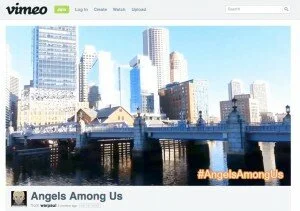 At the invitation of The Capital Network, I did my first Reddit Ask Me Anything. It was pretty fun. To do an AMA, you hang out for a specified time and anyone on the internet machine can ask you a question. Mine was all about crowd-funding – the new rules, issues, questions, concerns. Some good nuggets in there. You can read through the Q&A here. Or if you are based in the Boston area and want more detail, you can check out the TCN event it was promoting here.
At the invitation of The Capital Network, I did my first Reddit Ask Me Anything. It was pretty fun. To do an AMA, you hang out for a specified time and anyone on the internet machine can ask you a question. Mine was all about crowd-funding – the new rules, issues, questions, concerns. Some good nuggets in there. You can read through the Q&A here. Or if you are based in the Boston area and want more detail, you can check out the TCN event it was promoting here.
Comments, questions or reactions to this post? Leave a note below and I will respond to your questions.
If you enjoyed this post, you might enjoy my other posts on Angel Investing, Crowd Sourcing, Entrepreneurship.
Subscribe – To get an automatic feed of all future posts subscribe to the RSS feed here, or to receive them via email enter your address in the box in the upper right or go here and enter your email address in the box in the upper right. You can also follow me on Twitter @cmirabile and on Google+.

 angels don’t appreciate all the other quirky, sometimes fleeting, but always satisfying benefits of working with you along the way. Fact is, we are nothing without you.
angels don’t appreciate all the other quirky, sometimes fleeting, but always satisfying benefits of working with you along the way. Fact is, we are nothing without you. Fool Born Every Minute (So You Think You Want to Be An Entrepreneur?)
Fool Born Every Minute (So You Think You Want to Be An Entrepreneur?)
 7 Reasons Why Angel Investing Became Serious Finance
7 Reasons Why Angel Investing Became Serious Finance Creating and delivering a great pitch requires both using the right building blocks and putting them together properly. I
Creating and delivering a great pitch requires both using the right building blocks and putting them together properly. I  When I think of Boston as a start-up community I am reminded of the beer commercial – though in this case, it might be “tastes great, less hype.” There is an absolute hive of activity going on here – great start-ups, great schools, vibrant investor ecosystem, incubators and accelerators of every kind, and events on a nearly 24×7 basis. But it is not a showy town. Entrepreneurs just try to get after it with an under-promise and over-deliver attitude, and that is what I love about the city.
When I think of Boston as a start-up community I am reminded of the beer commercial – though in this case, it might be “tastes great, less hype.” There is an absolute hive of activity going on here – great start-ups, great schools, vibrant investor ecosystem, incubators and accelerators of every kind, and events on a nearly 24×7 basis. But it is not a showy town. Entrepreneurs just try to get after it with an under-promise and over-deliver attitude, and that is what I love about the city.
 A really smart investor I know named Tom Huntington (who blogs at On Strategy & Execution) likes to make the point that, in a lot of ways, Market ends up being more important than Team in determining the success of a start-up. It’s a variation of the old jockey vs. horse question (for a lot of interesting takes on that, see my
A really smart investor I know named Tom Huntington (who blogs at On Strategy & Execution) likes to make the point that, in a lot of ways, Market ends up being more important than Team in determining the success of a start-up. It’s a variation of the old jockey vs. horse question (for a lot of interesting takes on that, see my